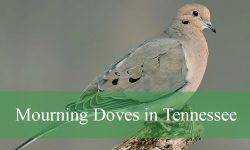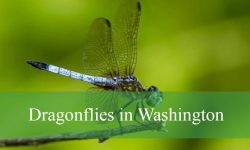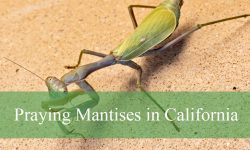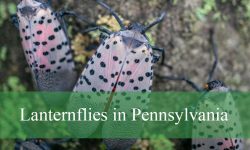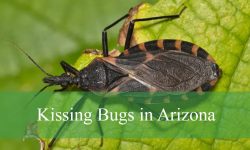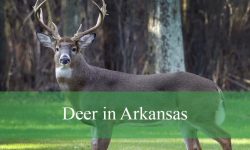Raccoons are one of the most recognizable mammals in North America, and Texas is home to several regional varieties. Known for their black facial mask and ringed tail, raccoons are adaptable creatures that live in forests, wetlands, coastal marshes, and even urban areas.
While only one true raccoon species exists in the United States—the Common Raccoon (Procyon lotor)—it is divided into multiple subspecies. In Texas, you’ll find three main types: the Common Raccoon (Procyon lotor lotor), the Texas Raccoon (Procyon lotor fuscipes), and the Gulf Coast Raccoon (Procyon lotor varius).
This detailed guide will help you identify each type of raccoon found in Texas, understand their behavior, and learn where they are most commonly seen.
The Raccoons of Texas
Texas offers diverse habitats, ranging from dry deserts and grassy plains to humid coastal wetlands and dense forests. This variety of ecosystems provides a perfect home for raccoons. These clever mammals are nocturnal omnivores that thrive around water, feeding on fruits, nuts, insects, fish, and even human leftovers in suburban neighborhoods.
Raccoons in Texas differ slightly depending on the region. The Common Raccoon dominates the eastern forests, the Texas Raccoon prefers central scrublands, and the Gulf Coast Raccoon is at home in the wetlands along the shoreline. Identifying which type you see often comes down to size, fur color, and where in Texas you encounter them.
Types of Raccoons Found in Texas
Common Raccoon (Procyon lotor lotor)
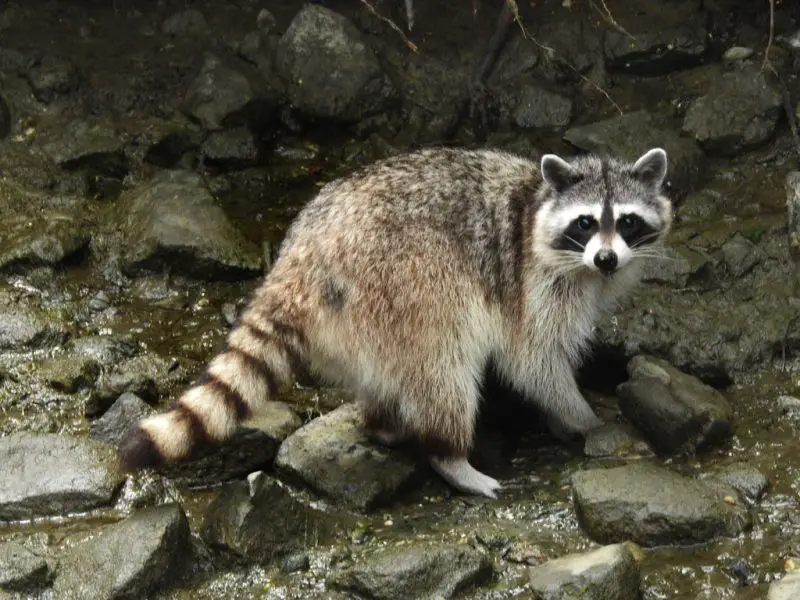
The Common Raccoon is the most widespread subspecies in North America and is abundant in eastern Texas. It has a stocky body, bushy tail with alternating black and gray rings, and the iconic black facial mask. Adults typically weigh between 10 and 30 pounds, though some males can grow larger in food-rich environments.
This raccoon prefers wooded areas, wetlands, and riverbanks, but it has adapted extremely well to human presence. In Texas towns and cities, it is not unusual to see these animals raiding trash cans or sneaking around backyards at night. Their intelligence and dexterous front paws make them skilled at opening containers, doors, and even latches.
Behaviorally, the Common Raccoon is solitary, with the exception of mothers raising young. They are excellent climbers and swimmers, often using trees for safety and water for foraging. Their diet is highly varied, consisting of berries, acorns, crayfish, frogs, insects, and occasionally small mammals. In agricultural regions of Texas, they sometimes cause problems by raiding cornfields and poultry coops.
The eastern forests of Texas, especially the piney woods and bottomlands, are the best places to find the Common Raccoon in its natural setting. However, it remains one of the most frequently spotted wildlife species in suburban neighborhoods, where streetlights and garbage bins provide reliable nighttime opportunities.
Texas Raccoon (Procyon lotor fuscipes)
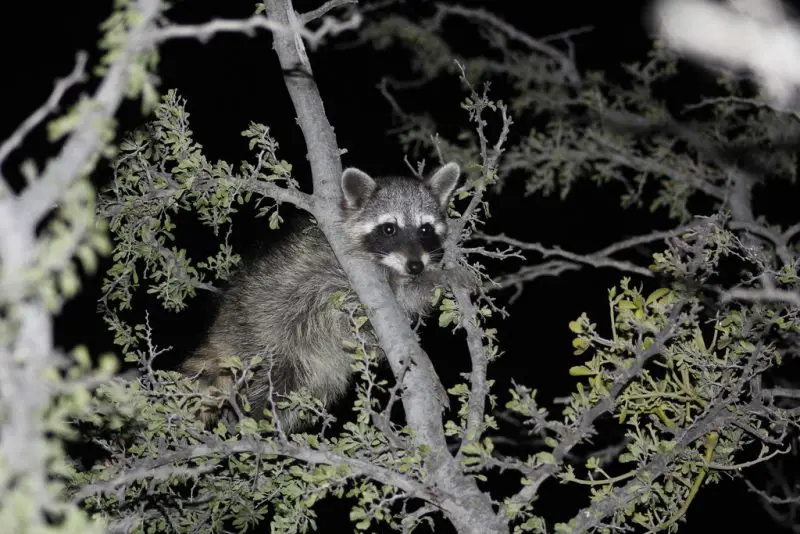
The Texas Raccoon, also known as the “southern plains raccoon,” is found mainly in central and southern Texas. Compared to the Common Raccoon, it is slightly smaller and more slender, with fur that often carries a reddish or tawny hue. Its facial mask is darker, giving it a striking contrast against the lighter fur of its face.
This type is well adapted to dry habitats, including mesquite brushlands, oak savannas, and arid scrub regions. While it still depends on access to water, it tolerates drier environments better than its eastern counterpart. Central Texas rivers, stock ponds, and creeks often serve as gathering points where Texas Raccoons hunt for frogs, fish, and aquatic invertebrates.
The Texas Raccoon is primarily nocturnal but can occasionally be spotted during the day, especially in quiet rural areas. It demonstrates a high level of adaptability and may den in hollow trees, rock crevices, abandoned burrows, or even barns. Unlike some northern subspecies that develop a thick winter coat, the Texas Raccoon tends to keep lighter fur year-round due to the warmer climate.
Farmers in rural Texas sometimes regard this raccoon as a pest because of its habit of raiding cornfields and chicken houses. However, it also plays a beneficial role in controlling insect and rodent populations. Its intelligence and problem-solving skills make it one of the most fascinating mammals in the state.
Gulf Coast Raccoon (Procyon lotor varius)

The Gulf Coast Raccoon thrives in the marshes, swamps, and barrier islands of southeastern Texas. It is slightly lighter in color compared to other subspecies, with silvery-gray fur and a somewhat leaner build. Its tail rings are often less distinct, and its fur is adapted to the humid coastal environment.
This raccoon is strongly tied to water-rich habitats. It often forages along tidal flats, estuaries, and mangrove-like thickets, feeding on crabs, shellfish, fish, amphibians, and wetland plants. Unlike its relatives in drier Texas regions, the Gulf Coast Raccoon spends much of its time near brackish or saltwater, making it an excellent swimmer and opportunistic feeder.
Behaviorally, the Gulf Coast Raccoon is similar to other raccoons but shows a stronger reliance on aquatic food sources. In fact, many are observed “washing” their food in shallow water before eating—a behavior that may help soften shellfish or simply be a natural instinct. Their tracks are frequently seen in coastal mudflats, where they hunt at night.
The best places to spot this raccoon in Texas are along the Gulf of Mexico shoreline, particularly in wetlands, marshes, and river deltas. Birdwatchers and anglers often encounter them in wildlife refuges where freshwater and saltwater mix. Their adaptability to coastal ecosystems highlights just how versatile the raccoon species has become in Texas.
Raccoon Behavior and Adaptations in Texas
Raccoons in Texas share several common traits regardless of subspecies. All are primarily nocturnal, highly intelligent, and opportunistic feeders. They use their sensitive front paws to manipulate objects, feel for prey under water, and even open man-made containers. Their intelligence has been compared to that of primates, with strong problem-solving abilities.
Texas raccoons also display remarkable adaptability to human presence. While they prefer wooded or wetland habitats, they are just as comfortable in urban areas where garbage, pet food, and garden crops provide reliable meals. This adaptability has caused conflicts in some communities, but it also shows how raccoons thrive in diverse environments.
Raccoon Tracks and Signs in Texas
If you’re hoping to identify raccoons in the wild, learning to recognize their tracks is useful. Raccoon tracks resemble small human handprints, with five toes on both the front and hind feet. The front tracks are about 2 to 3 inches long, while the hind tracks can be slightly larger.
You may also notice other signs of raccoon activity: overturned trash cans, raided bird feeders, or paw prints along muddy creek banks. Their scat often contains seeds, insect parts, or bits of shellfish, depending on their diet.
Raccoons and Human Interaction in Texas
Raccoons are fascinating creatures, but their presence near human homes can create challenges. They are known to dig through garbage, steal pet food, and sometimes take shelter in attics or barns. In rural Texas, they may raid chicken coops or damage crops.
To reduce conflicts, it’s best to secure trash bins, close off potential entry points into homes, and avoid feeding raccoons intentionally. While they may appear cute, raccoons can carry diseases such as rabies or parasites like roundworms, making it important to admire them from a distance.
Conservation Status of Texas Raccoons
All raccoon subspecies in Texas are considered common and are not endangered. Their adaptability to different ecosystems ensures that populations remain stable. In fact, in many areas raccoon numbers are growing, partly due to their ability to exploit human-altered landscapes.
However, raccoons face threats from habitat loss, road mortality, and disease outbreaks. Wildlife management programs in Texas monitor populations, particularly where raccoons may pose risks to agriculture or spread diseases to pets and livestock.
Final Thoughts
Raccoons are among the most adaptable and resourceful mammals in Texas. With three main subspecies—the Common Raccoon, Texas Raccoon, and Gulf Coast Raccoon—these masked creatures thrive in forests, scrublands, wetlands, and cities alike. They play an important ecological role while also providing Texans with frequent wildlife encounters.
Whether you’re exploring the piney woods of East Texas, the mesquite plains of the south, or the coastal marshes along the Gulf, chances are you’ll come across one of these clever animals. Recognizing their differences not only helps with identification but also deepens your appreciation for Texas’s rich wildlife diversity.
FAQs About Raccoons in Texas
Are raccoons dangerous in Texas?
Raccoons are not aggressive toward humans unless threatened, but they can bite if cornered. The main risk comes from diseases such as rabies and parasites, so it’s best to avoid direct contact.
What do raccoons eat in Texas?
Texas raccoons eat a wide variety of foods, including acorns, berries, insects, fish, frogs, crabs, corn, and even garbage. Their diet changes with habitat and season.
Where are raccoons most common in Texas?
They are found across the state. The Common Raccoon dominates eastern Texas, the Texas Raccoon thrives in central and southern regions, and the Gulf Coast Raccoon lives along the shoreline and marshes.
Do raccoons hibernate in Texas?
No. Unlike raccoons in northern states that may reduce activity during harsh winters, Texas raccoons remain active year-round due to the milder climate.
How can I tell the difference between raccoon subspecies?
Size, fur color, and habitat are the best clues. Common Raccoons are larger and widespread, Texas Raccoons are smaller and reddish, and Gulf Coast Raccoons are grayer and tied to wetlands.

